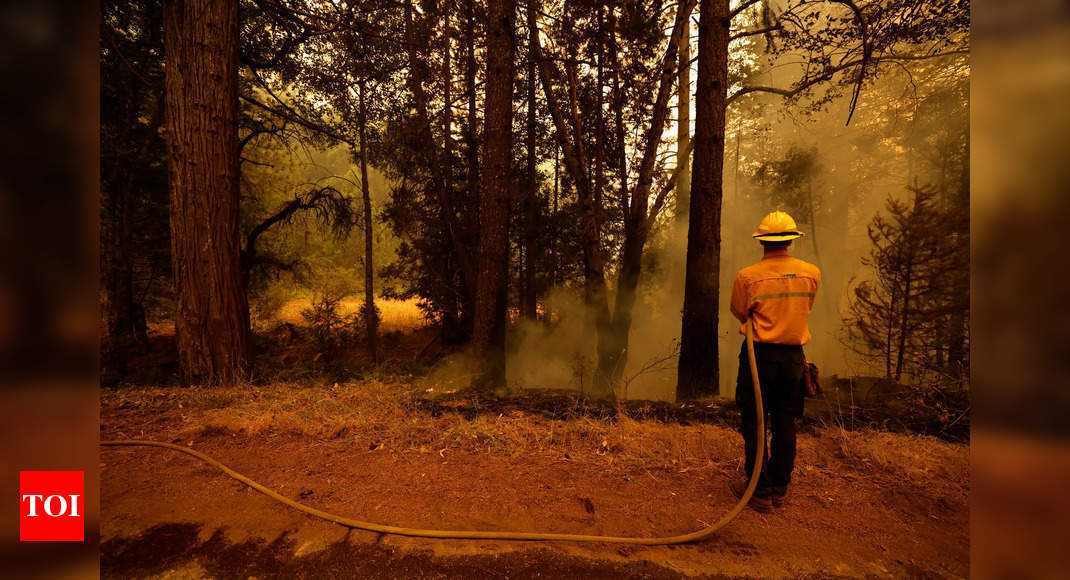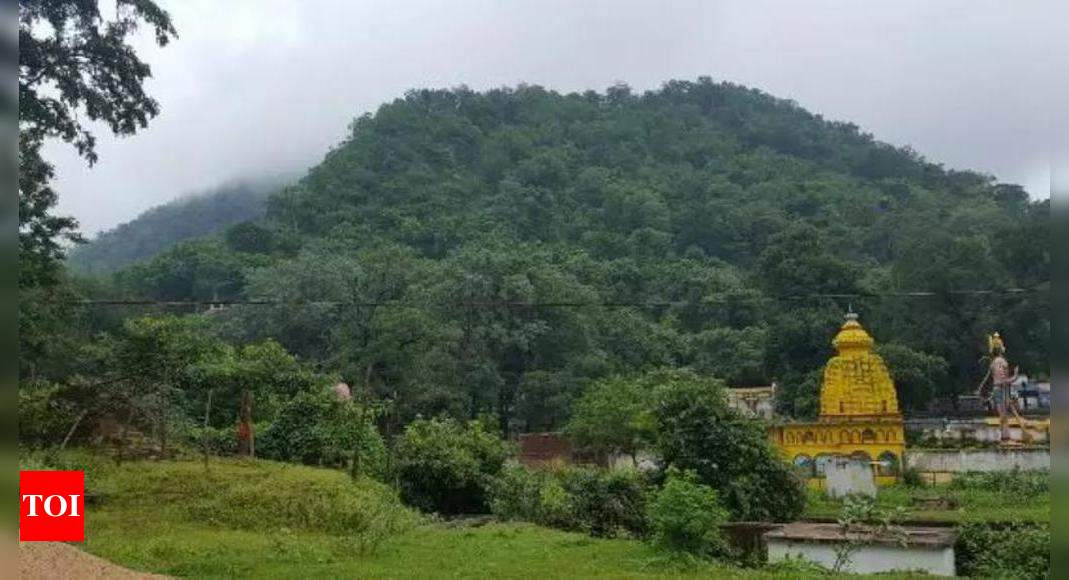
Thousands of firefighters are battling a rapidly growing wildfire in northern California after the blaze more than doubled in size within 24 hours. The Park Fire, which has now consumed over 350,000 acres (141,640 hectares), is located approximately 90 miles (144 km) north of Sacramento, the state capital, according to the California Department of Forestry and Fire Protection (Cal Fire).
Fire status
As of Saturday afternoon, the fire remained 0% contained. However, cooler temperatures and more humid air are expected in the region, potentially aiding efforts to slow the fire’s spread. Despite these hopeful conditions, the fire has already destroyed 134 structures.
Fires are becoming ever bigger
Experts say that decades of extinguishing fires at the first sign of smoke, combined with the effects of climate change, have set the stage for a massive wildfire in northern California and numerous smaller blazes across the western US and Canada.
These fires are moving faster and proving harder to fight than those in the past. The only way to prevent future wildfires from becoming so fierce is to use smaller controlled fires, a method indigenous people employed for centuries, experts suggest. However, they acknowledge that implementing this change won’t be easy.
The Park Fire: California’s largest blaze this year
The Park Fire, the largest blaze in California this year, spanned 544 square miles (1,409 square kilometers) as of Saturday. It ignited on Wednesday when a man reportedly pushed a burning car into a gully in Chico and then blended in with others fleeing the scene.
The intensity and rapid spread of the fire led officials to draw unfavorable comparisons to the Camp Fire of 2018, which devastated nearby Paradise, killing 85 people and destroying 11,000 homes.
Fires across the West
Communities across the U.S. West and Canada were also under siege from fast-moving flames on Saturday. According to the National Interagency Fire Center, more than 110 active fires covering 2,800 square miles (7,250 square kilometers) were burning in the U.S. on Friday.
“Amped up” is how Jennifer Marlon, a research scientist at Yale’s School of the Environment, described the recent fires. While there may not necessarily be more wildfires, they are larger and more severe due to the warming atmosphere.
“The big message is that seeing extreme wildfires is just part of a series of unnatural disasters that we are going to continue seeing because of climate change,” Marlon said.
Increasingly severe wildfires
Benjamin Hatchett, a fire meteorologist with the Cooperative Institute for Research in the Atmosphere at Colorado State University, noted that ten of California’s 20 largest fires occurred in the last five years. The Park Fire ranked eighth as of Saturday morning and continued to spread. Hatchett attributed the increase in fire severity to climate change, which creates more variability in weather conditions.
“We have a lot of very, very wet years and very, very dry years,” Hatchett said. “And so we get a lot of this variability that helps to accumulate and then dry out fuels.”
This year, record-setting temperatures in California dried up the plant growth from recent wetter-than-average years, creating ideal conditions for widespread large wildfires.
“We’re starting to push the limits of firefighting resource availability,” Hatchett said.
Nonstop fires
Today’s fires don’t allow firefighters a chance to rest, burning with extreme intensity straight through the night and into the next day, said Daniel Swain, a climate scientist at the University of California, Los Angeles, and the National Center for Atmospheric Research.
“We’re also seeing fires burning over a longer fire season than we used to,” Swain said.
The severity and heat of these fires can transform forests into different ecosystems. In some areas, trees are replaced with flammable invasive grasses due to climate change, affecting the ability of ecosystems to recover.
Controlled burns as a solution
In some parts of the country, like the Midwest, farmers use fire to control trees, woody shrubs, and invasive species. However, in the western U.S., fires have been extinguished in their infancy for decades.
Tim Brown, a research professor at the Desert Research Institute and director of the Western Regional Climate Center in Reno, Nevada, pointed out that accumulated fuel in these areas causes fires to burn hotter and more intensely than natural fires would.
Fires were once common in the West due to lightning strikes and indigenous burning, but this practice stopped during colonial settlement. Hatchett emphasized the need to return to controlled burns.
“That’s the only way we’re really going to get out of this, is to really accept and embrace the use of fire on our terms,” Hatchett said. “Otherwise, we’re going to get fire on the fire’s terms, which is like what we’re seeing right now.”
However, Swain acknowledged that conducting controlled burns is challenging in today’s landscape, where millions of acres cannot burn unchecked.
“This is something we need to be doing more of. But the practical reality of doing so is not at all simple,” Swain said.
The future of wildfire management
Despite the challenges, Swain said there is no option to address the wildfire risk that doesn’t involve fire.
“We’re going to see more and more fire on the ground,” he said. “The question is whether we want to see it in the form of more manageable, primarily beneficial prescribed burns, or in these primarily harmful, huge, intense conflagrations that we’re increasingly seeing.”
Fire status
As of Saturday afternoon, the fire remained 0% contained. However, cooler temperatures and more humid air are expected in the region, potentially aiding efforts to slow the fire’s spread. Despite these hopeful conditions, the fire has already destroyed 134 structures.
Fires are becoming ever bigger
Experts say that decades of extinguishing fires at the first sign of smoke, combined with the effects of climate change, have set the stage for a massive wildfire in northern California and numerous smaller blazes across the western US and Canada.
These fires are moving faster and proving harder to fight than those in the past. The only way to prevent future wildfires from becoming so fierce is to use smaller controlled fires, a method indigenous people employed for centuries, experts suggest. However, they acknowledge that implementing this change won’t be easy.
The Park Fire: California’s largest blaze this year
The Park Fire, the largest blaze in California this year, spanned 544 square miles (1,409 square kilometers) as of Saturday. It ignited on Wednesday when a man reportedly pushed a burning car into a gully in Chico and then blended in with others fleeing the scene.
The intensity and rapid spread of the fire led officials to draw unfavorable comparisons to the Camp Fire of 2018, which devastated nearby Paradise, killing 85 people and destroying 11,000 homes.
Fires across the West
Communities across the U.S. West and Canada were also under siege from fast-moving flames on Saturday. According to the National Interagency Fire Center, more than 110 active fires covering 2,800 square miles (7,250 square kilometers) were burning in the U.S. on Friday.
“Amped up” is how Jennifer Marlon, a research scientist at Yale’s School of the Environment, described the recent fires. While there may not necessarily be more wildfires, they are larger and more severe due to the warming atmosphere.
“The big message is that seeing extreme wildfires is just part of a series of unnatural disasters that we are going to continue seeing because of climate change,” Marlon said.
Increasingly severe wildfires
Benjamin Hatchett, a fire meteorologist with the Cooperative Institute for Research in the Atmosphere at Colorado State University, noted that ten of California’s 20 largest fires occurred in the last five years. The Park Fire ranked eighth as of Saturday morning and continued to spread. Hatchett attributed the increase in fire severity to climate change, which creates more variability in weather conditions.
“We have a lot of very, very wet years and very, very dry years,” Hatchett said. “And so we get a lot of this variability that helps to accumulate and then dry out fuels.”
This year, record-setting temperatures in California dried up the plant growth from recent wetter-than-average years, creating ideal conditions for widespread large wildfires.
“We’re starting to push the limits of firefighting resource availability,” Hatchett said.
Nonstop fires
Today’s fires don’t allow firefighters a chance to rest, burning with extreme intensity straight through the night and into the next day, said Daniel Swain, a climate scientist at the University of California, Los Angeles, and the National Center for Atmospheric Research.
“We’re also seeing fires burning over a longer fire season than we used to,” Swain said.
The severity and heat of these fires can transform forests into different ecosystems. In some areas, trees are replaced with flammable invasive grasses due to climate change, affecting the ability of ecosystems to recover.
Controlled burns as a solution
In some parts of the country, like the Midwest, farmers use fire to control trees, woody shrubs, and invasive species. However, in the western U.S., fires have been extinguished in their infancy for decades.
Tim Brown, a research professor at the Desert Research Institute and director of the Western Regional Climate Center in Reno, Nevada, pointed out that accumulated fuel in these areas causes fires to burn hotter and more intensely than natural fires would.
Fires were once common in the West due to lightning strikes and indigenous burning, but this practice stopped during colonial settlement. Hatchett emphasized the need to return to controlled burns.
“That’s the only way we’re really going to get out of this, is to really accept and embrace the use of fire on our terms,” Hatchett said. “Otherwise, we’re going to get fire on the fire’s terms, which is like what we’re seeing right now.”
However, Swain acknowledged that conducting controlled burns is challenging in today’s landscape, where millions of acres cannot burn unchecked.
“This is something we need to be doing more of. But the practical reality of doing so is not at all simple,” Swain said.
The future of wildfire management
Despite the challenges, Swain said there is no option to address the wildfire risk that doesn’t involve fire.
“We’re going to see more and more fire on the ground,” he said. “The question is whether we want to see it in the form of more manageable, primarily beneficial prescribed burns, or in these primarily harmful, huge, intense conflagrations that we’re increasingly seeing.”









